After I had spent a good part of the day on Les Salines beach which is said to be the most beautiful one on Martinique, I started walking in the direction of village Sainte-Anne. Needless to say, my intention was not to walk the entire 4.5 km, but since there was no public transport I decided to hitch-hike. However, since there were almost no cars passing this afternoon, I thought it would be pointless to stand in one place and that it would be better if I walked a little.
Close to the beach, there is a large salty lake – Salines Pond (Etang des Salines) which is connected with the sea by a canal and there are lots of mangroves growing there. From the road, it did not look spectacular, but one should bear in mind that a good portion of this lake is a protected natural area.
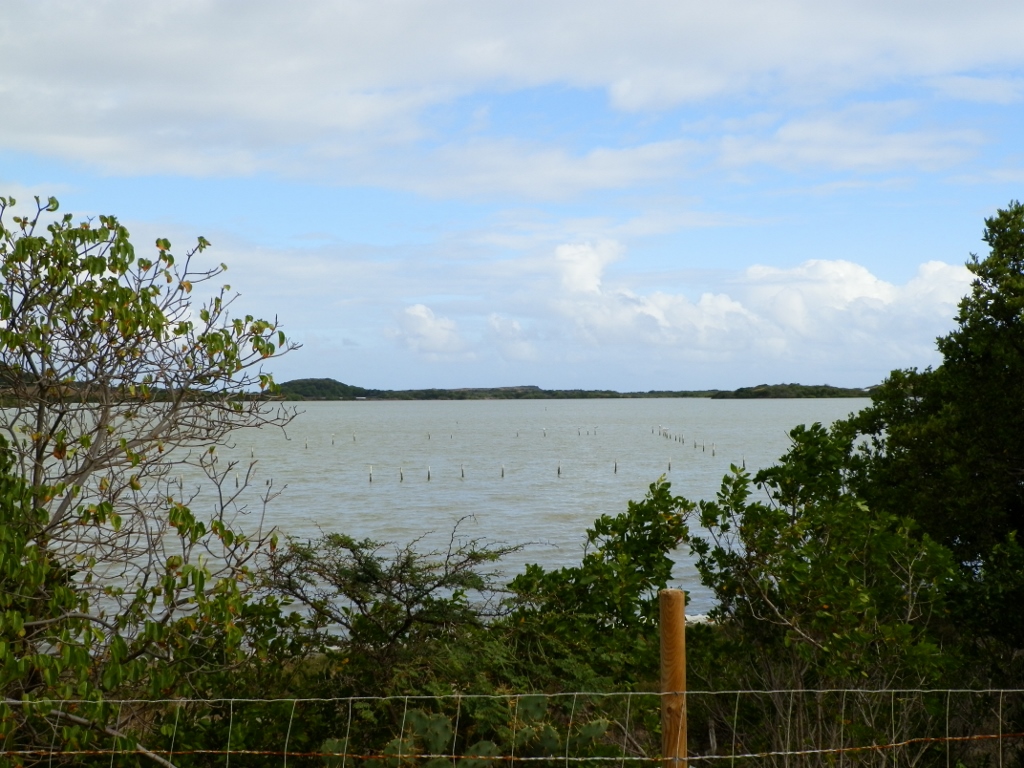 Salines pond
Salines pond
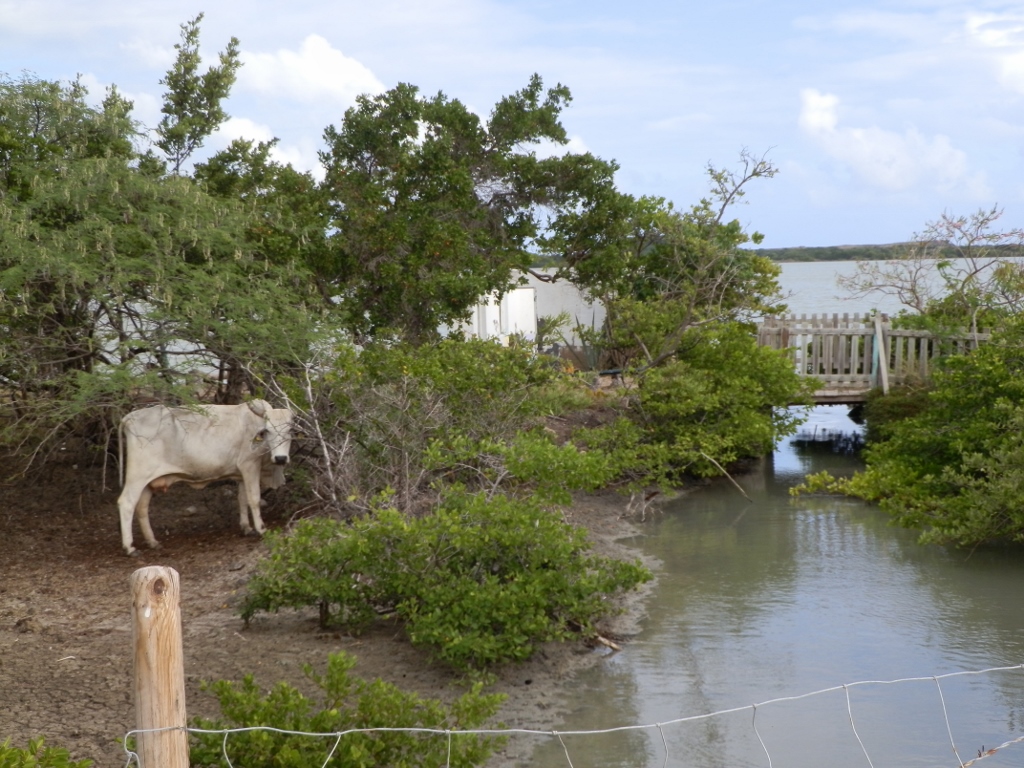 Details of the Salines pond and its shore
Details of the Salines pond and its shore
Still, while watching the salty lake and its environment, I also through about whether I would manage to get to Sainte-Anne. There were no cars to speak of for a while and those few that passed by did not stop. So, I continued to walk. It was not very hot since there was a fine breeze.
Before coming to Martinique, I imagined I would move around by public transportation and possibly using taxi, but this was obviously a completely impractical plan. The public transportation was very rare, it stopped early, even earlier on weekends, while taxi was far too expensive since the distances were large. In other words, since I didn’t have my driving licence with me, I was forced to hitch-hike, but apparently it was a common way of transporting here. On the spot I decided to choose only the vehicles in which the driver was alone.
After a while a young woman stopped and then it turned out I was quite lucky. Originally I wanted to go to Sainte-Anne to have a coffee there, walk a little and grab a bite, and so I asked this French lady if she was going to Sainte-Anne. Once inside the car, while chatting I asked her how far she was going. As it turned out, she was heading for the capital and so in the end she drove me all the way to the crossroad where there was a turning to village Ducos in which I was staying (around 40 km).
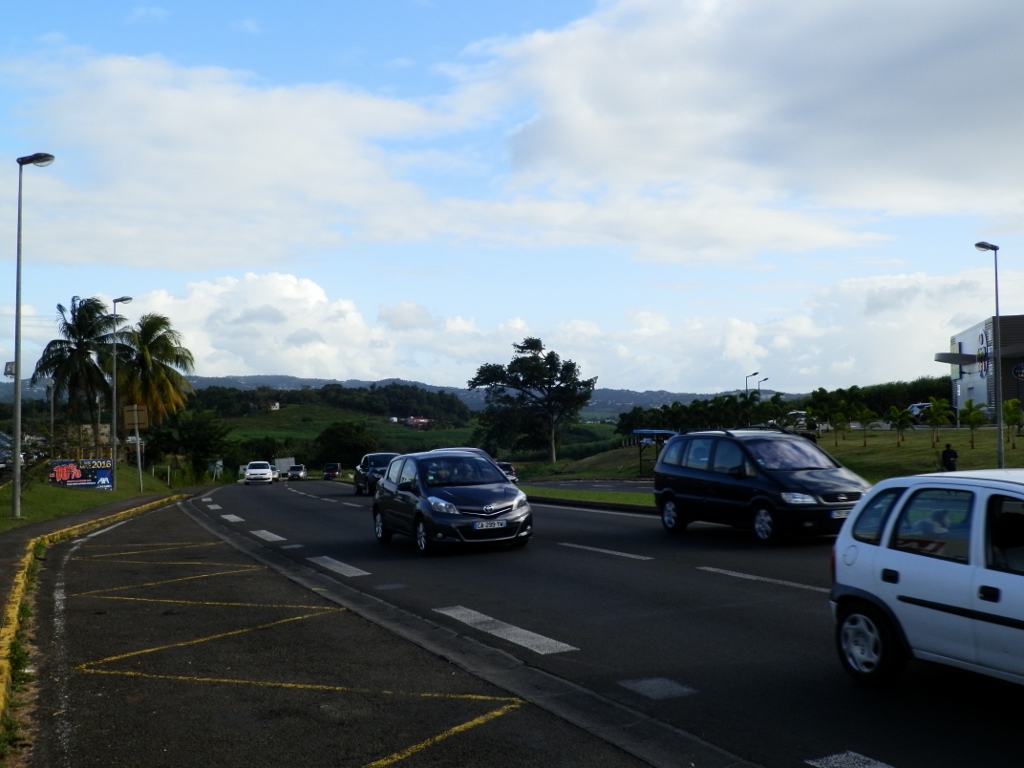 Earlier in the day I waited for taxico at the stop on the other side of the road
Earlier in the day I waited for taxico at the stop on the other side of the road
This also meant, however, that I was back near Ducos already around 4 pm. Still, I did not mind this. I had to walk some 2 km to the centre of the village, but the day was perfect – it was warm, with a nice breeze, so it felt very good.
So, I got to the centre where the church was and there I also stopped at a supermarket to buy a few items, since together with the rental of the room I also had the use of the fridge.
As for the church, this is the Church of the Birth of the Holy Virgin. Like in the case of practically all the churches I was going to see on Martinique, this one in Ducos that is seen today is not the original, since all the originals were destroyed sooner or later by some of the regular hurricanes that blow here. Thus, the first church was built here in 1877, then it was destroyed in 1891, while the one in the photo was built in 1901.
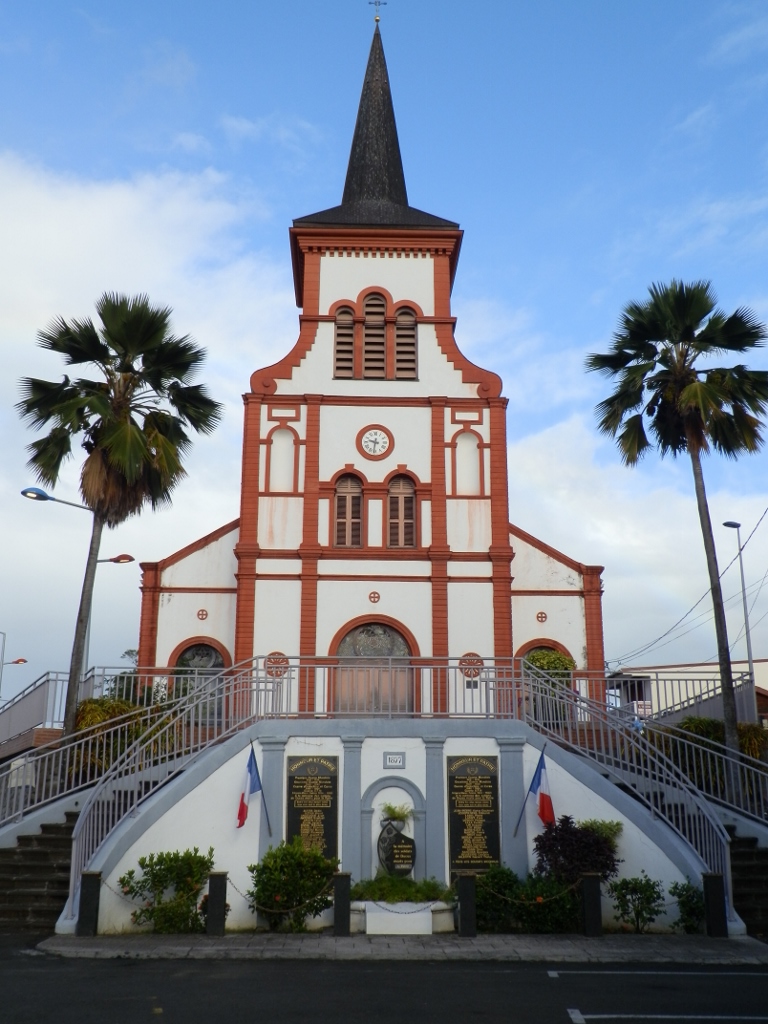 Church of the Birth of the Holy Virgin in Ducos
Church of the Birth of the Holy Virgin in Ducos
On this occasion the church was closed, but a couple of days later I passed by when the church was open, so I went in. The most impressive was the wooden ceiling. Since I’m talking about this church now, it is a good opportunity to show what this ceiling looks like.
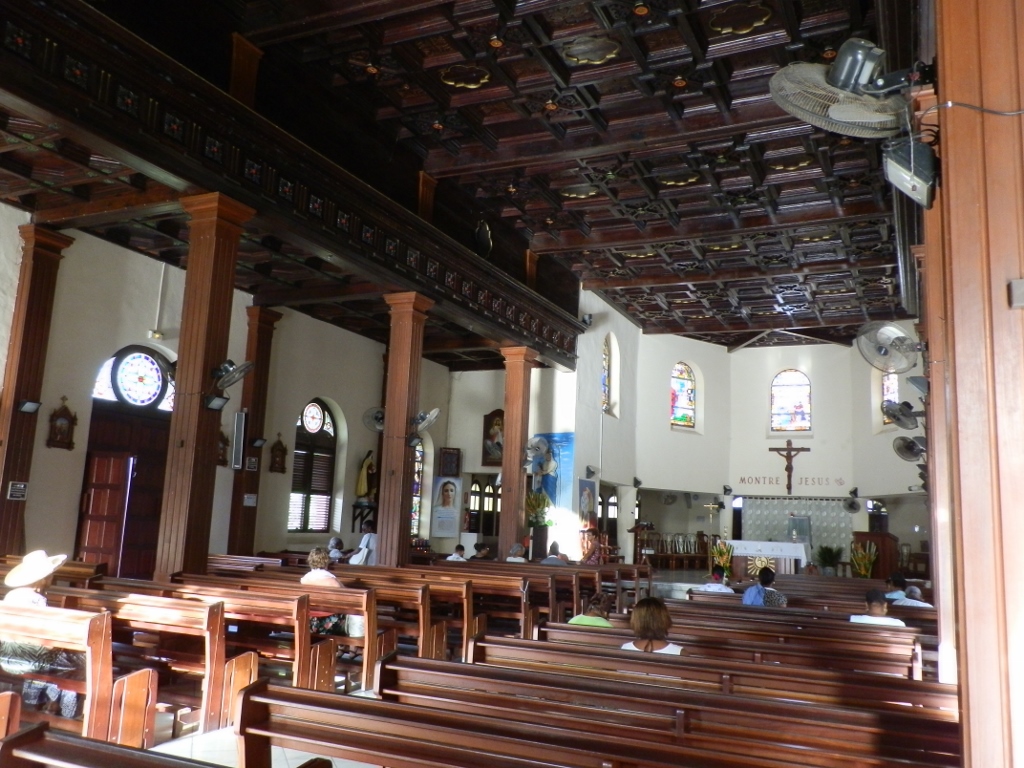 The interior of the Church of the Birth of the Holy Virgin in Ducos
The interior of the Church of the Birth of the Holy Virgin in Ducos
Along the way I also stopped at a local restaurant where I had something light to eat and then I simply went to my room with a plan to go to bed early again in order to have additional rest. Before doing so, I chatted with Annie a little and then we also agreed further details about the following day.
Namely, Annie had already offered to me to go on a sightseeing trip with a French woman to whom she had rented a car and since I agreed in principle, she went on organising everything. So: a Cendrine came from “continental” France here for a month and so she rented a car at Annie’s. She wanted to keep the cost of sightseeing trips to a bare minimum and so Annie proposed that I joined her for a day and that we split the rent for the day and the fuel. The agreement was that she should pick me up at 9 am. As it turned out, there were four of us in total on this trip: two French women from France (Cendrine and Christelle), one French woman from here (Silvane) and me.
Let me first explain this thing about France a little. Martinique belongs to France and it is equally a part of this country as Paris. The official currency here is the euro and the island is also a part of the European Union. So, Cendrine and Christelle were from France which is in Europe, while Silvane was from Martinique, i.e., from the part of France that belongs to the American continent and that is a part of the French overseas territories.
After breakfast I sat in the living room, checking the internet a little and waiting for Cendrine who was a little late, but I was in no hurry and quite atypically for me I had absolutely no plans. The idea was just to join Cendrine and to follow her wherever she wanted to go on that day. Annie told me that Cendrine came here to study vegetation, since the latter was into plants, so she was also trying to get a job in that area in order to be able to stay on Martinique for as long as possible.
And then at some point, somebody rang the bell at the door and I got up to open. So, I had already known that Cendrine was a great fan of plants, but I was still surprised when I saw a woman at the door who had green hair on her head! Some people tend to get carried away with their interests. Joking aside, Cendrine was all smiles and very nice and talkative, and although my French was quite rusty, we still managed to hit it off right away.
We parted from Annie and went to the car where we found Silvane waiting for us since she came together with Cendrine and then all together we drove to a place in the hills close to Ducos in order to pick up Christelle. Both Cendrine and Christelle came from continental France independently one from the other in order to look for a job here and while doing that they rented their respective rooms at the house owned by Silvane. We waited a little for Christelle and for Cendrine to finish something, so I took the opportunity to look at the surroundings.
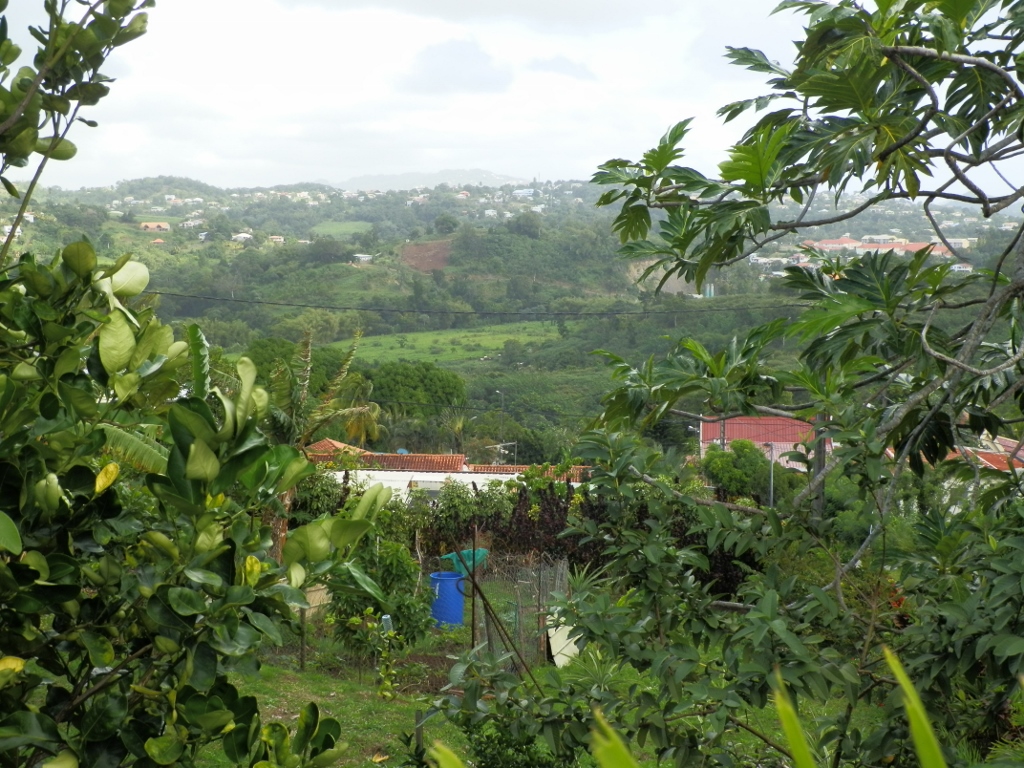 View at the surroundings from the yard of the house in which Cendrine and Christelle rented their rooms
View at the surroundings from the yard of the house in which Cendrine and Christelle rented their rooms
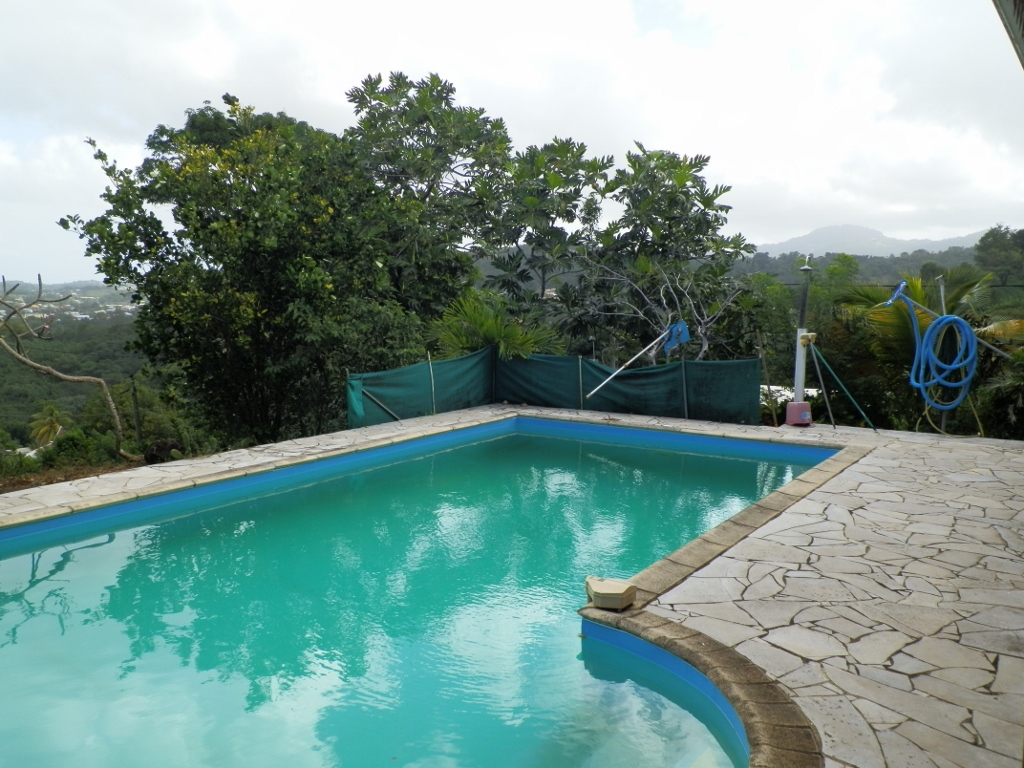 Pool belonging to the house in which there are rooms to rent
Pool belonging to the house in which there are rooms to rent
Looking at all of this and also bearing in mind the room I had rented, I thought about how much I and all the people I know are inflexible. We always think of hotels first and only then about apartments, while private rooms are almost never taken into consideration.
Cendrine came here with a desire to find a job and she gave herself about a month to do so. I presume that she had limited funds and that’s why she rented a room in the middle of a remote village in the hills of Martinique and then she rented a small car, but not at a large rent-a-car company, but again more low key, since it was less expensive. She even came across an entrepreneurial owner of the small rent-a-car who suggested that she should include for her sightseeing tour a woman from Serbia who could barely put two simple French sentences together in order to cut the costs, at least for that day.
As for me, the first night I almost fainted when I saw my room, not because I had not stayed at modest places in my life before, but rather because I have grown out of it. Admittedly, I was not the only one with this attitude. While I was sitting in the living room the night before, checking the internet, a group of five elderly people came there to rent a car. You should have seen the shock on their faces they could not hide when in that living room, in addition to me sitting in a corner with my computer placed on the only small free space on the table they also saw all sorts of things piled up, including several of those obsolete, 3-dimensional computer monitors and numerous baby car seats.
A part of me also thinks that I am better “positioned” in my life now, so I suppose I should stay in better places. On the other hand, what does it have to do with anything? After all, this is just a place where I spend the night.
At this house where Cendrine stayed, there were several rooms to be rented, while the kitchen and the yard were shared. Later I would have an opportunity to meet some of the tenants that had rented their rooms there.
When we were all finally ready for the excursion, we got into the car and since Cendrine was the driver, Christelle and Silvane kindly suggested that I should sit in the front since I was the tallest one. In other words, they were very thoughtful, which I appreciated also because of the looking out and taking photos through the windshield.
We started with the tour by passing through the outskirts of the capital Fort-de-France and then we continued along the northbound road following the west coast. We drove through a few smaller settlements. In some sections, the road led directly beside the sea and there were a lot of clouds. It even rained sporadically.
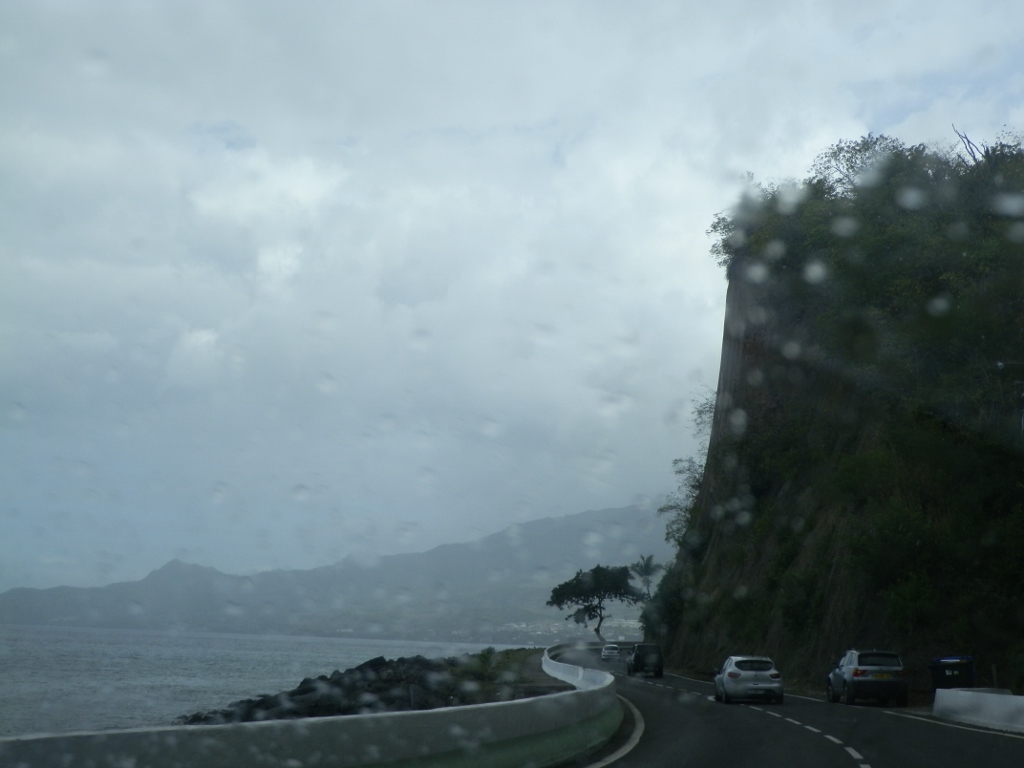 Driving in Martinique while it is raining
Driving in Martinique while it is raining
And then we came to the first destination which was a little town called Saint-Pierre. It is located some 30 km north of the capital, but by the time we got there, the rain had stopped and the clouds had mostly dispersed. While we drove slowly along one of the main streets, I took the opportunity to take a photo of the Cathedral of Our Lady of the Assumption.
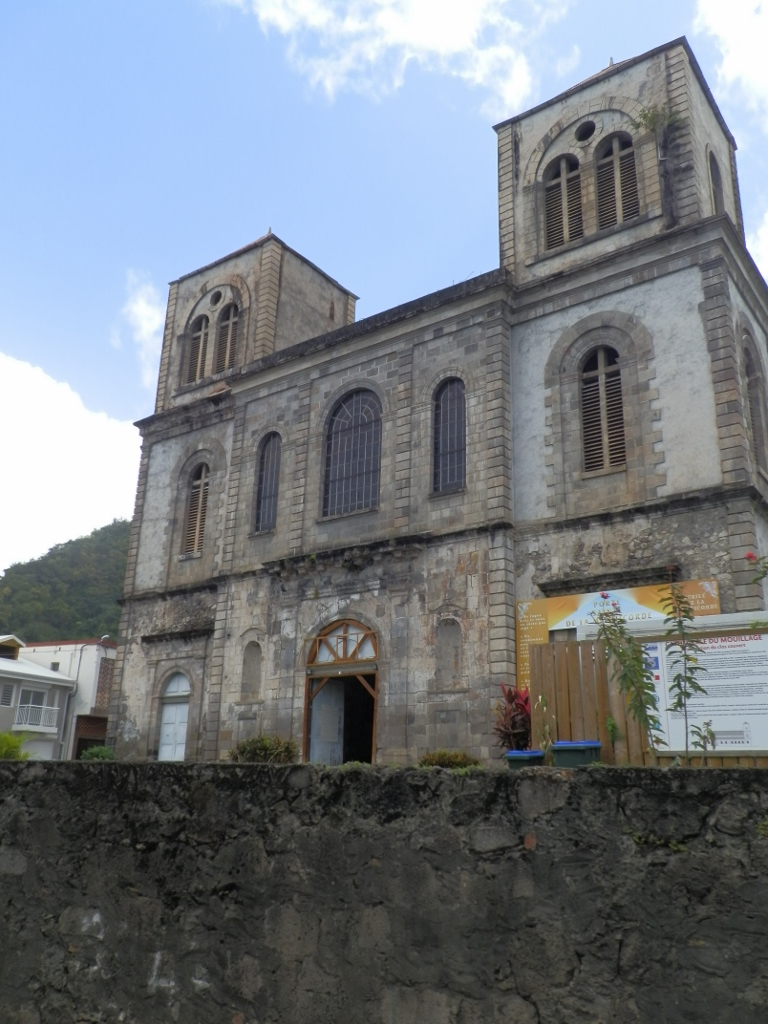 Cathedral of Our Lady of the Assumption
Cathedral of Our Lady of the Assumption
We got to a parking lot in the centre of the town and left the car there. As the parking is situated right next to the beach itself, we first headed there in order to walk by the sea a little.
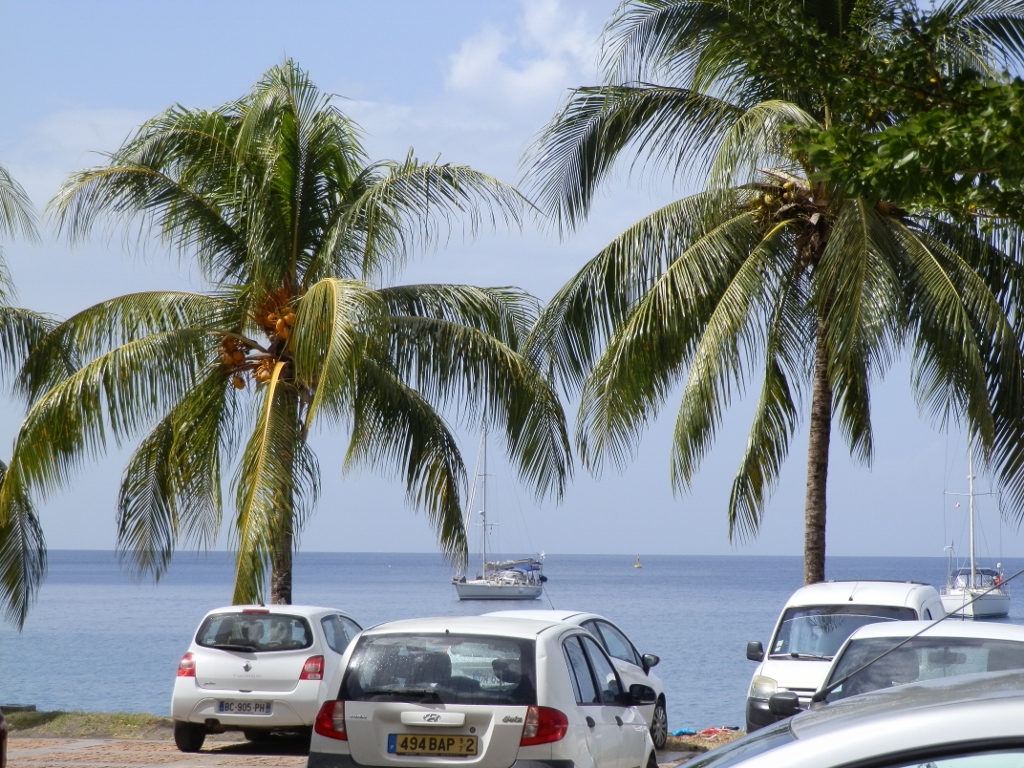 Parking lot in Saint-Pierre
Parking lot in Saint-Pierre
This beach is very interesting because it is made of black sand.
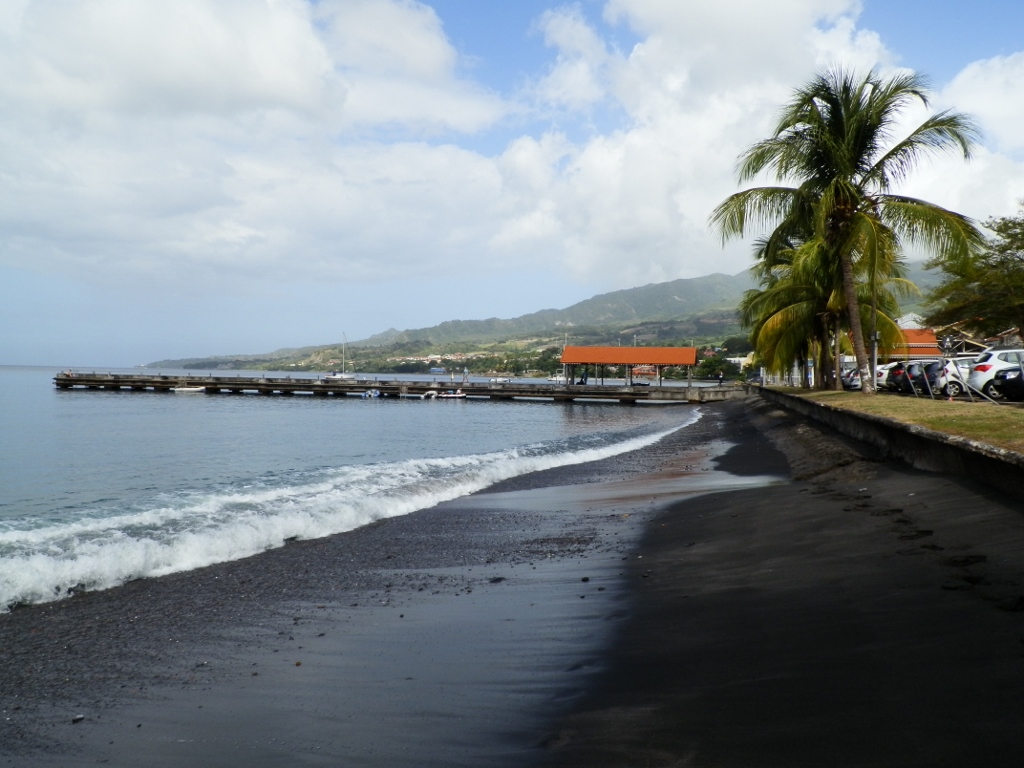 Beach in town Saint-Pierre
Beach in town Saint-Pierre
Admittedly, when you looked at it from the other side, the sand did not seem as black, but this was still not the colour linked to tropical destinations advertised in tourist brochures.
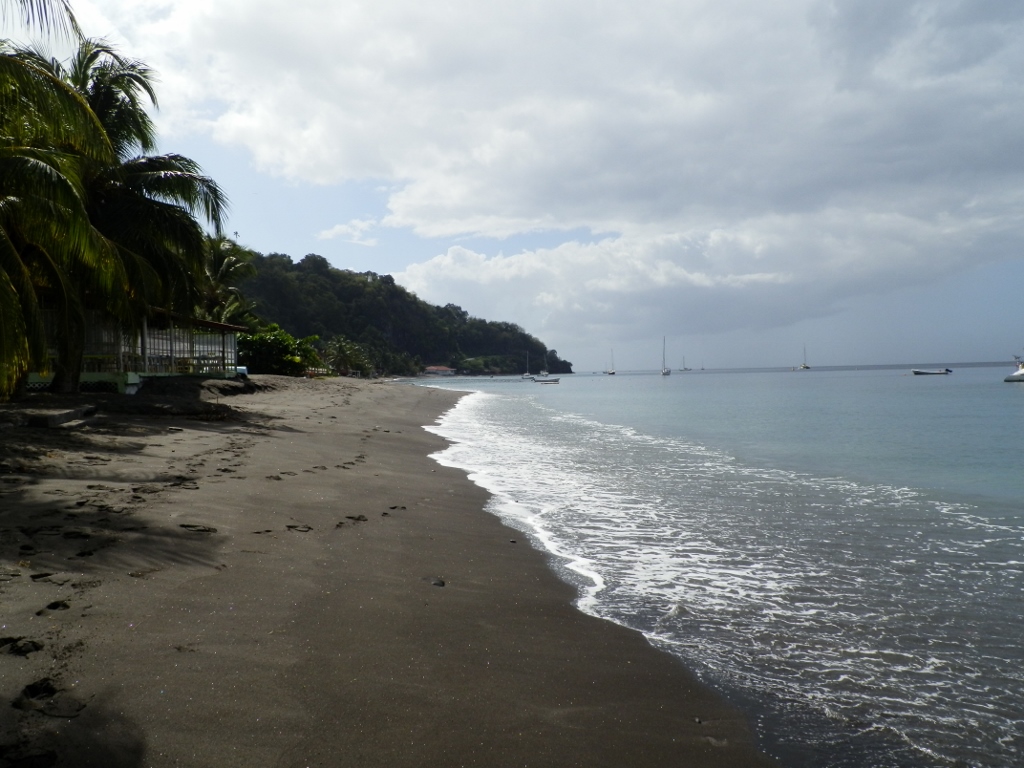 Beach in town Saint-Pierre
Beach in town Saint-Pierre
Martinique is a very attractive island for those who are interested in different sand colours. Namely, I came across a piece of data in a brochure which claimed that over 200 nuances of sand could be found on the beaches of the island. For an island that is around 70 km long and around 30 km wide, this is quite impressive.
The reason for such diversity in the sand colours lies in the fact that Martinique has a volcanic origin and nowadays there are several places where volcanic activity can be recorded. The most active is volcano Mount Pelée which is 1,395 m high and which is situated in the north of the island, right in the direct proximity of Saint-Pierre. The last recorded eruption of this volcano was in 1932, but it was quite mild. However, in 1902 Mount Pelée had a very strong eruption and around 30,000 residents of Saint-Pierre were killed on the occasion literally within minutes. Thus, this eruption became the greatest volcanic tragedy of the 20th century.
However, on this beautiful day in January 2016 everything was calm and pleasant and so I only walked leisurely with my new friends along the beach.
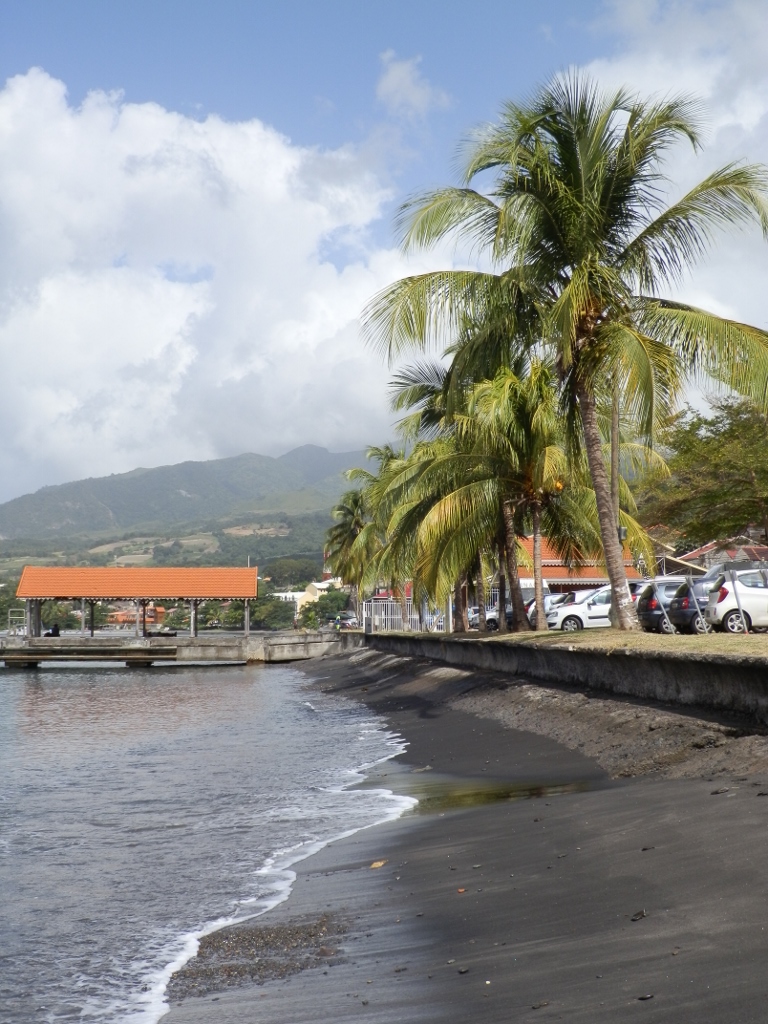 Beach in town Saint-Pierre
Beach in town Saint-Pierre
From the beach I could see the slopes of volcano Mount Pelée although its peak was hidden by clouds.
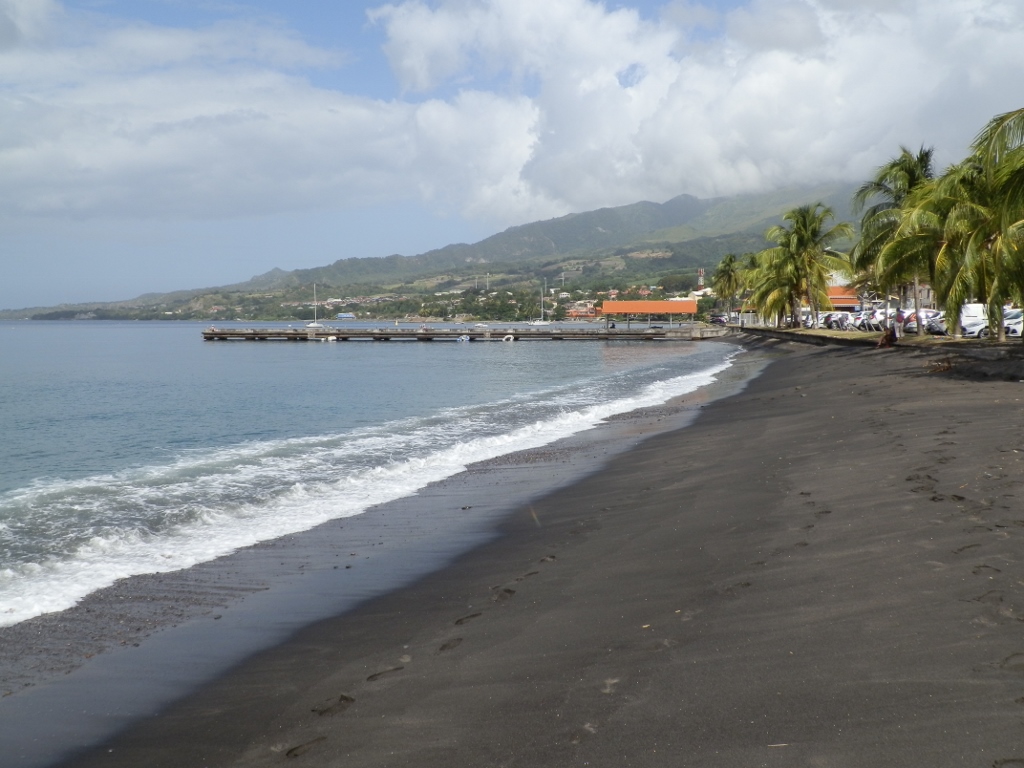 Beach in town Saint-Pierre and slopes of volcano Mount Pelée
Beach in town Saint-Pierre and slopes of volcano Mount Pelée
Before its destruction by the 1902 eruption, town Saint-Pierre was culturally and economically the most important settlement on Martinique. Moreover, it used to be called “Paris of the Caribbean.” Following the eruption it has never succeeded in returning to the level of the old glory and nowadays it is a small town with around 5000 residents.
After our walk on the beach, we also walked a little along the plateau that extends beside the beach and there was also a covered local market.
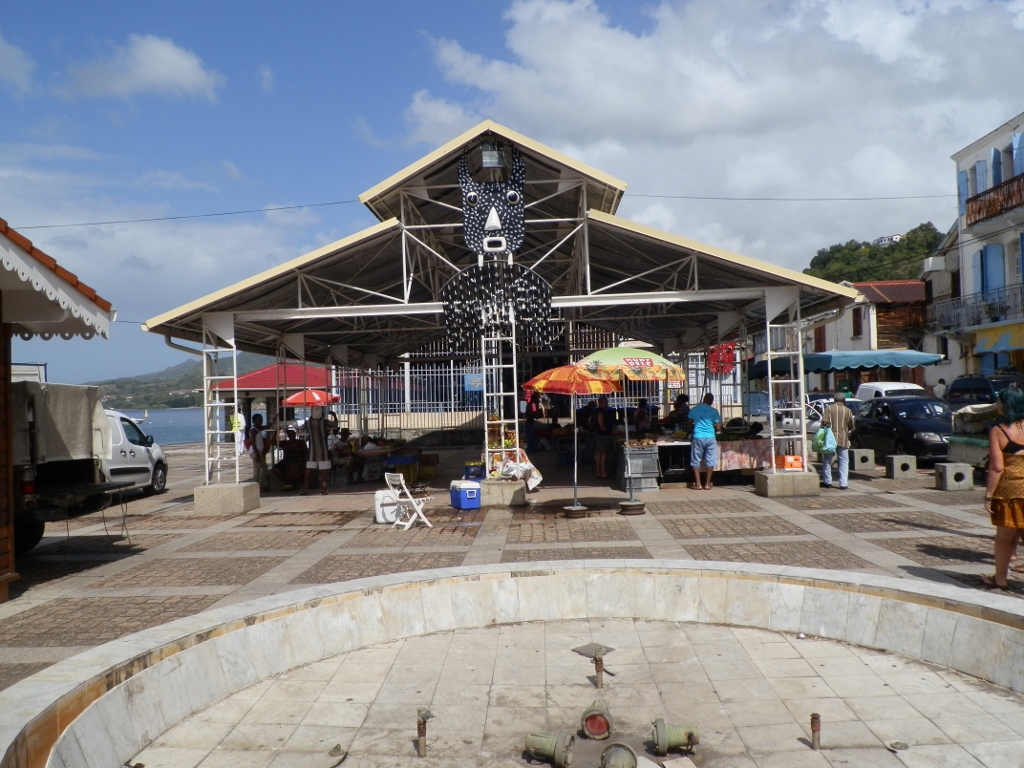 Market in town Saint-Pierre
Market in town Saint-Pierre
The market was rather modest this day, but I took the opportunity to buy some bananas.
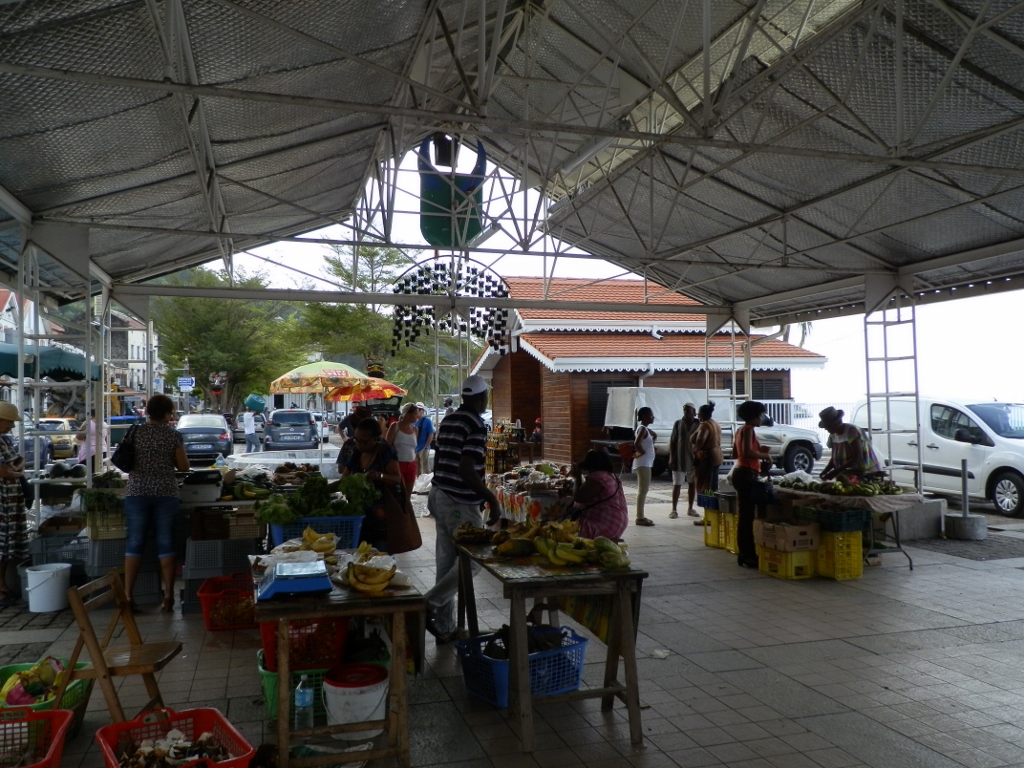 Market in town Saint-Pierre
Market in town Saint-Pierre
Although there are a few sites that are available to visitors, and these are all primarily linked to the unfortunate volcanic eruption from 1902, none of my co-travellers was interested in such visits and so I just followed suit. Thus we walked for a couple of hundred metres to one side and then back and I only took photos of a few buildings I found interesting.
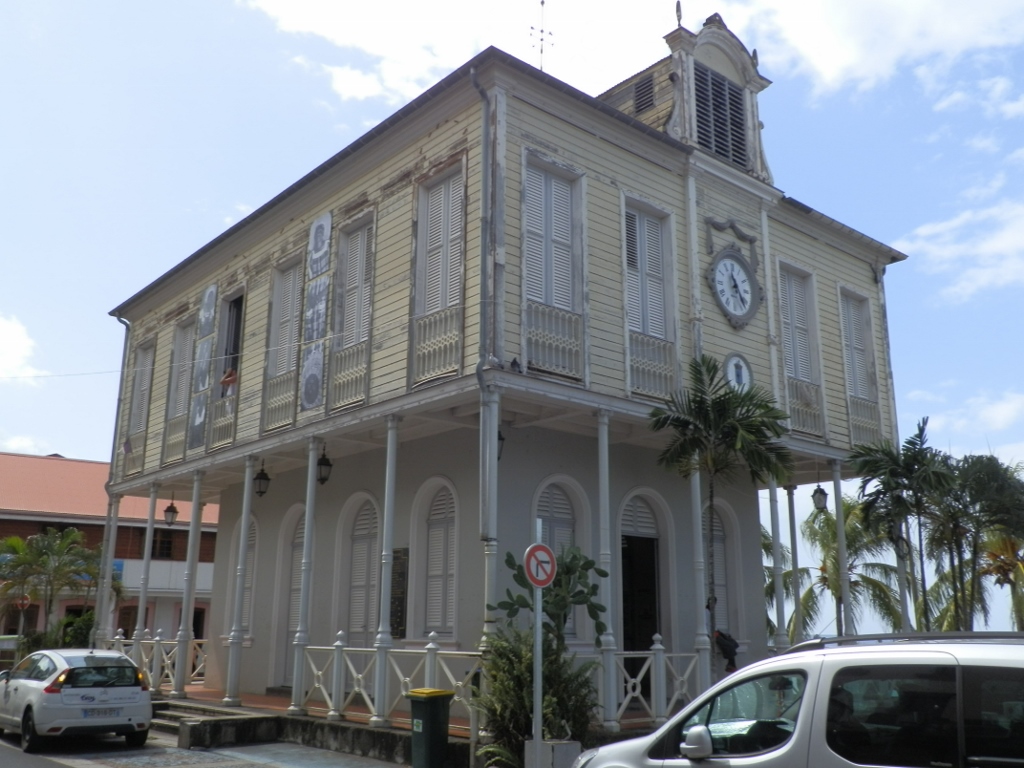 One of the buildings beside the beach
One of the buildings beside the beach
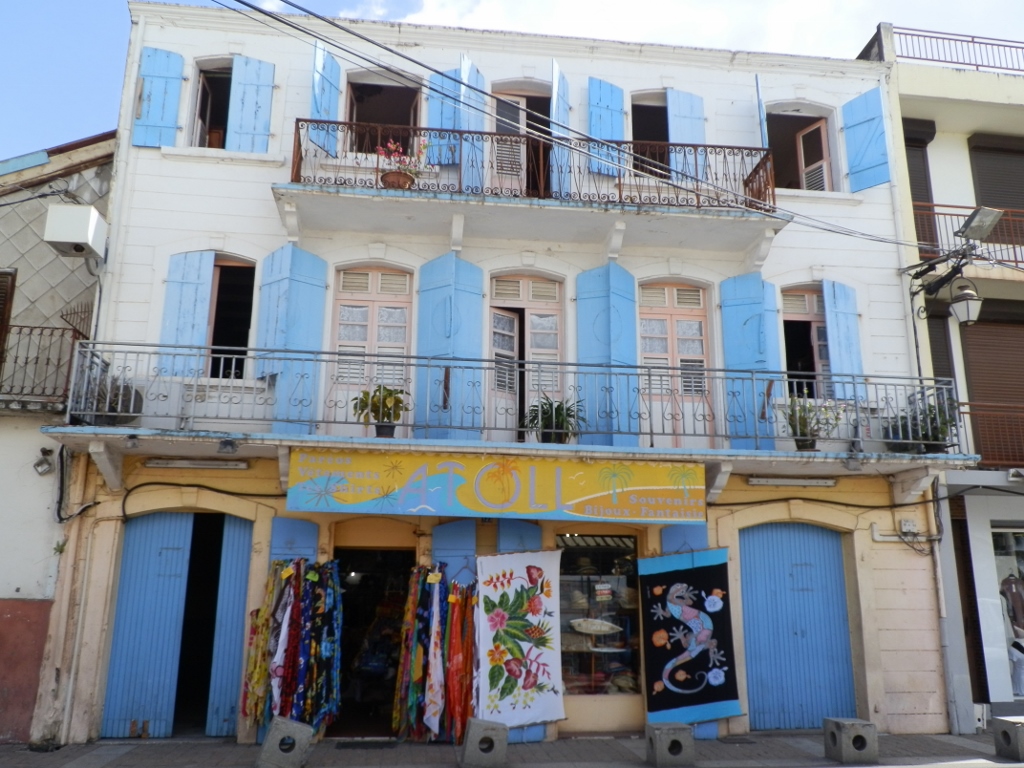 One of the buildings in the street running along the beach
One of the buildings in the street running along the beach
Some of the buildings that exist there (and here I don’t think of those that can be seen in the photos) seemed to be in a rather crumbly state, almost as if they were from a third-world country, while in fact this was – France. Certainly, with time, houses and facades deteriorate and they need to be maintained, but here the problem is additionally accentuated because of the very high humidity, heat, rains, normal winds, as well as hurricanes... and when you put all of this together, it certainly contributes greatly to the rotting and deterioration of the materials.
While I was taking photos of buildings and thinking about the maintenance of facades, Cendrine bought a portion of accras du morue that was packed in a paper bag. These are fish fritters that are typical of Martinique, as well as the whole region of the Caribbean Sea. I was utterly delighted with this taste and that was my new favourite on Martinique, at least as far as food was concerned.
The next photo is not good, I wanted the fritter to be in the focus, but it doesn’t matter really – you can see the fine black sand beach again, while the fritter was fantastic!
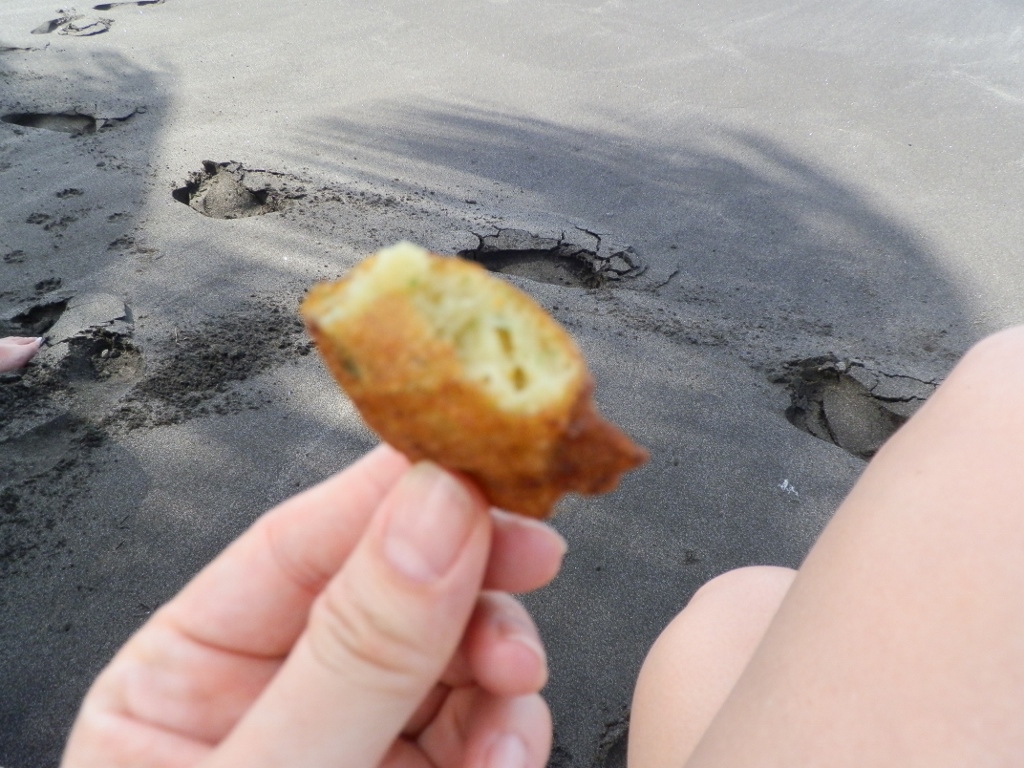 Accras du morue
Accras du morue
After this break, all four of us were ready to continue with our trip further up north. Still, before entering the car, I took a photo of the beach in Saint-Pierre once again, this time under the beautiful, blue sky.
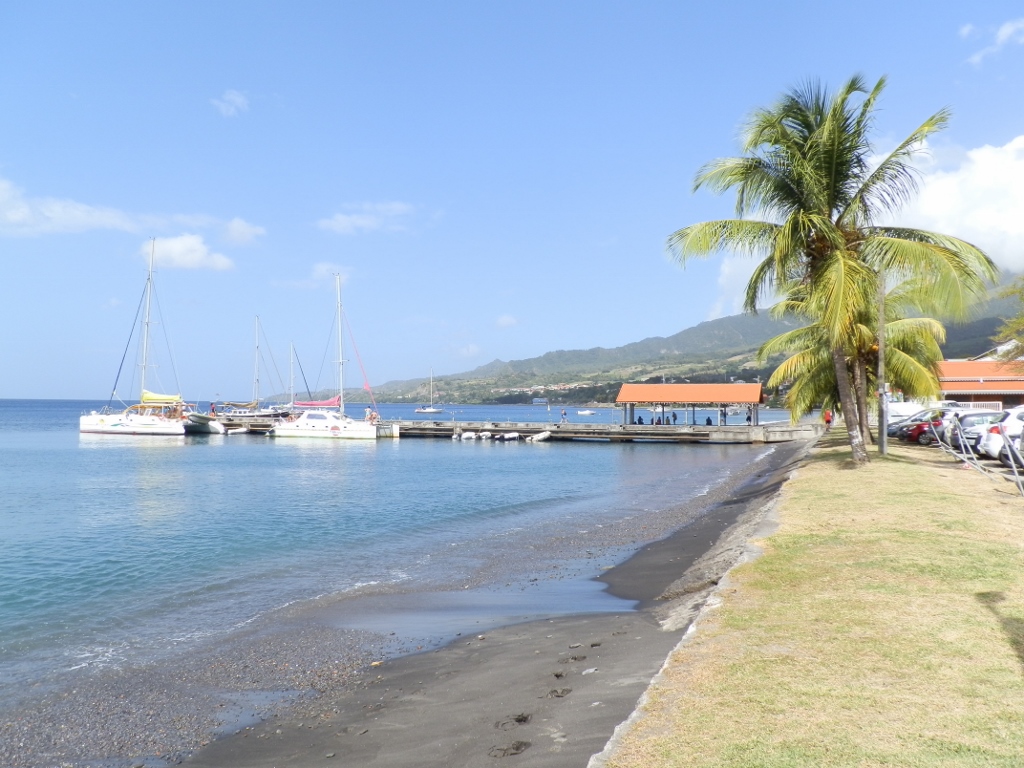 Beach in town Saint-Pierre
Beach in town Saint-Pierre